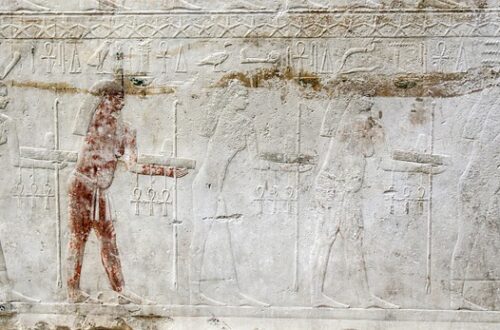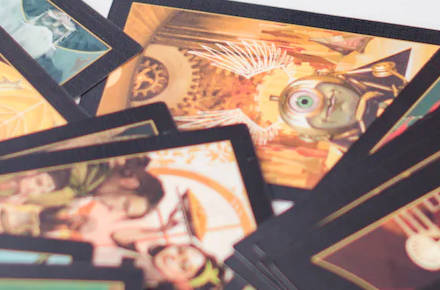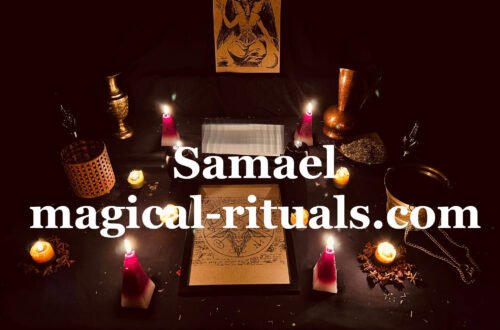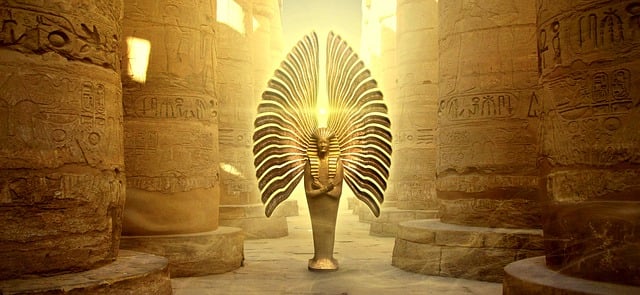
Interpreting egyptian love spells: Symbols and their meanings
Table of Contents
- The role of symbols in Egyptian Love Spells
- The Ankh: Symbol of eternal life and love
- The Scarab: Symbol of rebirth and transformation
- The Lotus: Symbol of purity and sensuality
- The Eye of Horus: Symbol of protection and healing
- The Djed Pillar: Symbol of stability and endurance
- The Knot of Isis: Symbol of protection and fertility
- The Bennu Bird: Symbol of resurrection and renewal
- Conclusion
Ancient Egypt is famous for its profound connection to magic, spirituality, and mysticism. Among the many forms of magic practiced in ancient Egypt, love spells stand out as one of the most intriguing. These spells were not only a reflection of romantic desires but also a way to seek divine intervention in matters of love, attraction, and relationships. Central to these love spells were sacred symbols, which carried deep meanings and cosmic energies. Each symbol held a unique power, influencing the effectiveness and purpose of the magic cast.
This article explores the essential symbols used in Egyptian love spells and provides insight into their meanings and roles in rituals, offering a clearer understanding of how these ancient people sought to influence love and relationships through the use of mystical symbols.
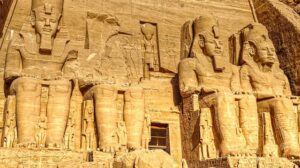
The role of symbols in Egyptian Love Spells
The magical and spiritual importance of symbols
In ancient Egypt, symbols were far more than artistic representations; they were imbued with heka, the divine force of magic. Egyptians believed that using symbols in magic could connect them with the powers of the gods, the forces of the cosmos, and the energies of nature. Each symbol carried a specific vibration or meaning that could influence the outcome of a spell, depending on how it was used and the intentions behind it.
When used in love spells, these symbols were designed to evoke feelings of attraction, protection, fertility, or emotional harmony. Egyptian love spells often included symbols drawn on papyrus, inscribed on amulets, or invoked through rituals to attract love, ensure fidelity, or strengthen relationships. These symbols also carried protective properties, shielding lovers from jealousy, rivals, or misfortune.
Common uses of symbols in love spells
- Attracting a Lover: Some symbols were used specifically to draw a romantic partner into one’s life, channeling the energy of desire and attraction.
- Enhancing passion: Symbols associated with fertility and sensuality were employed to increase passion and intimacy between lovers.
- Securing fidelity: Amulets and charms engraved with certain symbols were worn to protect relationships from infidelity or betrayal.
- Restoring harmony: In times of conflict or emotional distress, symbols representing harmony and protection were used to restore peace in relationships.
Now, let’s delve into the specific symbols used in Egyptian love spells and uncover their meanings.
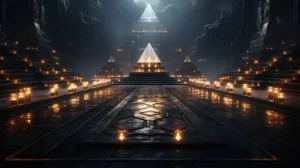
The Ankh: Symbol of eternal life and love
The Ankh in egyptian culture
The Ankh is one of the most iconic symbols of ancient Egypt, often referred to as the “key of life” or “breath of life.” It resembles a cross with a loop at the top and is often seen in depictions of gods and goddesses bestowing life upon humans. In a broader sense, the ankh symbolized eternal life, spiritual power, and the connection between the mortal world and the divine.
The Ankh’s role in love spells
In love spells, the ankh symbol represented the eternal nature of love. It was often used in rituals or drawn on amulets to ensure that romantic relationships were long-lasting and filled with spiritual depth. The ankh could also symbolize the union between two souls, both in this life and the afterlife, making it a powerful tool for those seeking a lifelong partner or a deep, soul-level connection.
When inscribed on an object or worn as jewelry, the ankh was believed to protect lovers from external harm and ensure that their relationship remained sacred and unbroken. Couples could exchange ankhs as a sign of their eternal devotion and commitment to one another.
The Scarab: Symbol of rebirth and transformation
The Sacred Scarab Beetle
The scarab beetle was highly revered in ancient Egyptian culture and symbolized transformation, renewal, and protection. The scarab was associated with the god Khepri, who represented the rising sun and the cycle of life, death, and rebirth. Just as the scarab beetle rolled balls of dung, which were seen as a metaphor for the sun moving across the sky, the symbol was thought to help individuals transform and regenerate.
The Scarab in love magic
In love spells, the scarab symbol was used to bring about renewal and transformation within relationships. For couples going through difficult times or seeking to rekindle passion, the scarab was invoked to symbolize the shedding of old emotional baggage and the beginning of a new, healthier phase of the relationship.
The scarab was also a symbol of protection, safeguarding lovers from jealousy, betrayal, and external forces that could threaten their bond. It was often inscribed on amulets worn by individuals who wanted to keep their love safe from harm or who sought to attract a lover who could offer stability and growth.
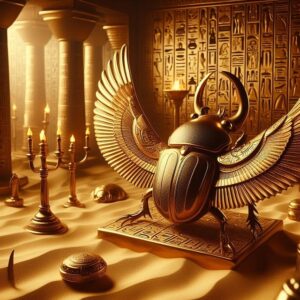
The Lotus: Symbol of purity and sensuality
The Sacred Lotus Flower
The lotus was one of the most significant symbols in ancient Egypt, representing purity, beauty, sensuality, and spiritual awakening. The flower’s ability to bloom in muddy waters and rise above the surface to reveal its beauty made it a potent symbol of rebirth and resilience. It was also closely linked to the goddess Hathor, the goddess of love, beauty, music, and joy.
The Lotus’s use in love spells
In love spells, the lotus symbolized both physical attraction and spiritual connection. It was used in rituals aimed at enhancing a lover’s beauty or invoking sensuality and passion. The lotus’s association with Hathor also made it a powerful symbol for fostering emotional intimacy, joy, and affection in relationships.
When depicted in magical texts or spells, the lotus was used to open the heart, inviting new love or rekindling feelings of attraction in an existing relationship. Couples often exchanged lotus flowers or charms to symbolize their connection, while single individuals used the lotus in spells to attract a desirable partner.
I invite you to watch the video of casting the Egyptian spell
The Eye of Horus: Symbol of protection and healing
The myth of the Eye of Horus
The Eye of Horus, also known as the Wadjet eye, was a symbol of protection, healing, and divine insight. It originated from the myth of Horus, the sky god, who lost his eye in a battle with his uncle Set. The eye was later restored by the god Thoth, making it a symbol of healing and restoration. In Egyptian iconography, the Eye of Horus represented royal power, protection, and health.
The Eye of Horus in love spells
The Eye of Horus was commonly used in love spells to offer protection to relationships. It was thought to guard against jealousy, envy, or betrayal, ensuring that the bond between lovers remained intact. For individuals who felt threatened by rivals or external forces, invoking the Eye of Horus helped safeguard their relationship from harm.
This symbol also had a healing component, making it valuable in spells aimed at restoring emotional wounds, overcoming past heartbreaks, or mending strained relationships. Couples who had experienced conflict or emotional pain could use the Eye of Horus to promote healing and bring about a renewed sense of harmony and understanding.
The Djed Pillar: Symbol of stability and endurance
The Djed Pillar in egyptian mythology
The Djed pillar was a symbol of stability, strength, and endurance in ancient Egypt. It was associated with the god Osiris, the god of the underworld, resurrection, and eternal life. The Djed was often seen in funerary contexts, representing the stability of the deceased in the afterlife, but it also had broader meanings related to the strength and longevity of any endeavor.
The Djed Pillar in love spells
In love magic, the Djed pillar symbolized stability and commitment. It was used in spells to ensure the endurance of relationships, helping couples weather the challenges of time and maintain a strong bond. For individuals seeking a serious, long-term relationship, invoking the Djed in their spells would invite a partner who was reliable, committed, and ready for a lasting union.
The Djed pillar was also used to restore balance and harmony in relationships that had been affected by instability or uncertainty. Whether a couple was experiencing emotional turbulence or simply seeking to strengthen their connection, the Djed pillar provided the energy of endurance and strength to overcome any obstacles.
The Knot of Isis: Symbol of protection and fertility
The Knot of Isis and its symbolism
The Knot of Isis, also known as the Tyet, was closely associated with the goddess Isis, the great mother and goddess of magic, fertility, and protection. The Tyet resembled the ankh symbol but with arms that were curved downward, often interpreted as representing the power of feminine energy, life, and the blood of childbirth.
The Knot of Isis in love magic
The Knot of Isis was frequently used in love spells as a symbol of fertility, motherhood, and protection. Women who sought to conceive or who wanted to nurture their maternal instincts often invoked the Tyet in their magical workings. It was believed to provide the blessings of Isis, ensuring a healthy pregnancy and safeguarding both mother and child.
In love spells, the Knot of Isis also symbolized protection for relationships. Isis, known for her devotion to her husband Osiris, represented the ideal of a loving, committed relationship. The Tyet was used to invoke this energy, offering protection from infidelity, jealousy, or external forces that might threaten the bond between lovers. Couples who wanted to ensure the sanctity and security of their relationship would incorporate the Knot of Isis into their spells or wear it as a protective amulet.
The Bennu Bird: Symbol of resurrection and renewal
The Bennu Bird in egyptian mythology
The Bennu bird, often identified with the phoenix, was a symbol of resurrection, renewal, and eternal life. It was associated with the sun and the cycle of life, death, and rebirth. The Bennu was believed to rise from its own ashes, signifying the idea of renewal and transformation after destruction.
The Bennu Bird’s role in love magic
In love spells, the Bennu bird was used to signify the renewal of passion and emotional connection. For couples who had gone through difficult times, invoking the Bennu bird in a spell could help reignite the flame of love and bring a fresh start to the relationship. It was also used to overcome past heartbreaks, allowing individuals to heal from emotional wounds and be open to new love.
The Bennu bird symbol was often incorporated into spells focused on long-lasting relationships, as it was a reminder that love, like the Bennu, could be continuously renewed and reborn.
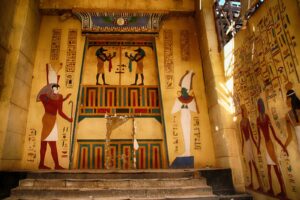
Conclusion
Symbols played an essential role in the love magic of ancient Egypt, carrying deep meanings and energies that connected lovers to the divine, nature, and the cosmos. Each symbol, whether it was the ankh, scarab, lotus, or Eye of Horus, brought its own power to spells aimed at attracting love, ensuring fidelity, fostering passion, or protecting relationships from harm.
By understanding these symbols and their meanings, modern practitioners can appreciate the depth of ancient Egyptian love magic and the timeless wisdom embedded in these sacred symbols. Whether used in rituals, amulets, or artistic depictions, these symbols continue to inspire and guide those seeking love, connection, and harmony in their relationships.
Bibliography:
1. Pinch, G. (2006). Magic in ancient Egypt (Rev. ed.). University of Texas Press.
2. Niwinski, A. (1987). Protective magic in ancient Egypt. The Journal of Egyptian Archaeology, 73(2), 165–174.
3. Ritner, R. K. (1993). The mechanics of ancient Egyptian magical practice. The Oriental Institute of the University of Chicago.
4. Frankfurter, D. (2009). The ritualization of scripture in Egyptian Christianity. In J. Dieleman & W. Wendrich (Eds.), Magical practices in ancient Egypt (pp. 259–281). Brill.
5. Zivie-Coche, C. (2004). Amulets and magic in ancient Egypt (L. Leseur, Trans.). American University in Cairo Press.


